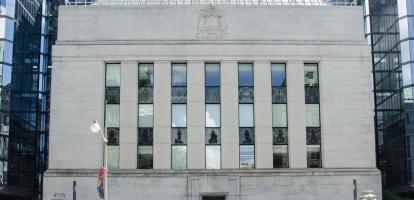Toronto city council has just approved an extra increase in property taxes — another 1.0 per cent in 2020 and 2021 on top of a previously approved 0.5 per cent hike, and a full 1.5 per cent for four years starting in 2022. Mayor John Tory, previously a staunch supporter of holding the line on property taxes, pushed it. The vote went 22-3 in favour — a convincing margin considering most politicians hate to vote for higher taxes. Even many conservative commentators praised the hike as necessary to support social services and better infrastructure. Which makes me wonder: how many on council, in the media, or the city at large know anything about Toronto’s fiscal numbers? Does anyone?
Here’s a test. What was the City of Toronto’s actual bottom line in 2018, the last year for which it has published its financial results? I’ll give a hint: Toronto ran a surplus. How big? Here’s another hint: its expenses in 2018 totalled $12.3 billion.
So how big was Toronto’s 2018 surplus? You might have guessed something around $1 million. Maybe $10 million. Surely not more than $100 million. Why else would council be approving an extraordinary tax hike — against the mayor’s explicit previous promises — and why else would this reversal of a foundational policy be garnering widespread applause? Surely Toronto needs the money to avoid cuts to essential services and deterioration of its transit system, roads and sewers. If its bottom line isn’t in the red, it must be just barely in the black.
Wrong, wrong and wrong! Toronto’s actual surplus in 2018 — the excess of the city’s total revenue over its total expenses — was more than $1.4 billion. You can look it up.
The city’s audited financial statements show that it realized more than $13.7 billion in revenue, which covered the $12.3 billion in expenses just mentioned, leaving a surplus upward of $1.4 billion.
That is a startling number. And not just as a prelude to an extraordinary tax hike. It means that Toronto’s surplus was more than 10 per cent of its revenue. In other words, for every dollar of revenue, it needed less than 90 cents to cover its expenses, with the rest going to build up its net worth. That’s as though the province of Ontario, with $153.7 billion in revenue in its latest (2018/19) fiscal year, had posted a $16.0 billion surplus, instead of its actual $7.4 billion deficit. Or as though the federal government, with $332.2 billion in revenue in 2018/19, had posted a $34.7 billion surplus, instead of its actual $14.0 billion deficit.
We should pause to give the City of Toronto credit for running in the black. It would be good for Ontarians if their provincial government did the same and good for all of Canada if the feds ceased their chronic borrowing.
But there’s a key difference at the city level. If Ontario or the federal government were running that far in the black, their budgets at the beginning of the year would prefigure the good news, and the budget debates would feature potential program increases and tax cuts. Toronto’s budgets prefigured nothing of the sort. The only way people in Toronto can get a sense of the city’s fiscal situation is by looking backward. Which hardly anybody does. So almost nobody knows that Toronto ran a $1.4 billion surplus in 2018. Or that surpluses around 10 per cent of revenues are typical of the city’s performance over the past five years.
How can this be? Each of those years featured high-anxiety debates about cuts in services and maintenance just to balance the budget. The weird answer — which also helps explain the city’s shabby and inadequate infrastructure — is that Toronto does not present budgets that match its financial statements. City budgets do not show capital investments as assets and amortize them as they deliver their services. That would be sensible: that is how they appear in Toronto’s financial statements, and how they appear in provincial and federal budgets and financial statements. Instead, Toronto’s budgets show them as cash outlays. That makes them look hard to afford — so Toronto builds less infrastructure, and more slowly, than it could.
This weird budgeting also helps explain the surpluses — and the tax increase council just voted — because it induces Toronto to collect too much cash upfront for what it does build. Think of the development charges that raise the price of new homes. And the property taxes its citizens pay already. The result of all this pre-paying is that the healthy overall fiscal position Toronto’s surpluses have created — positive net worth of $19.7 billion at the end of 2018 — includes something else council members probably don’t know about: $11.3 billion of financial assets. Toronto shouldn’t be running an investment portfolio. Some of that money should already have been invested in physical assets such as transit, roads and sewers. And some of it should not have been taxed at all.
When Toronto sets its 2020 budget, including the anticipated revenue from the new tax hike, councillors and city residents should insist on seeing projections that match what the city will publish at the end of the year. Those projections will show that Toronto is on course for another big surplus. Which will come as a surprise — to no-one more than the councillors who just voted for a tax increase and the pundits who applauded them for doing it.
Published in the Financial Post
William B.P. Robson is president of the C.D. Howe Institute.





